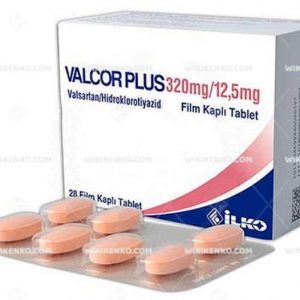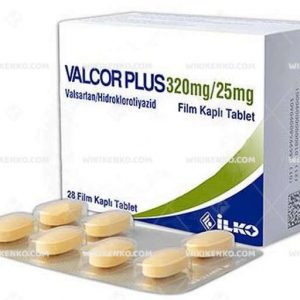Vomepram Injection
| Pack size | |
|---|---|
| Potency | 10 Mg/2Ml 5X2Ml |
| Manufacturer | |
| Origin | |
| Generic Name (Ingredient) | Each Ampoule (2 Ml) Contained 10 Mg Of Metoclopramide Hydrochloride. |
Assuming your emergency circumstances for this product, visit Urgent Quotation page. Besides, for any pharmaceutical questions, please ask us in the comments section.
Description
VOMEPRAM 10mg/2ml bulb containing I.M./I.V. injection solution
It is applied into the muscle or into the vein.
Sterile-Apirogen
- Active ingredient: Each ampoule (2 mL) contains 10 mg of metoclopramide hydrochloride.
- Auxiliary substance(s): Sodium chloride, sodium metabisulite and injection water.
| ATC | Public No. | Equivalent Code | Type | Unit Quantity | Packing | Production Location | License Tar. | License No. |
|---|---|---|---|---|---|---|---|---|
| A03FA01 | A14851 | E346A | Generic Pharmaceuticals | 10+2 MG/ML | 5 | manufactured | 2014-05-21 | 2014/434 |
| World Health Organization (WHO) | ||
|---|---|---|
| Essential Medicine | Children’s Basic Medicine | Neonatal Essential Medicine |
| Not on the List | Not on the List | Not on the List |
What is Vomepram and what is it used for?
Vomepram is a drug applied into the muscle/intravenous in a transparent glass bulb containing a 2 mL colorless solution. The active ingredient of Vomepram is metoclopraid HCl. Each 2 mL bulb contains 10 mg of metoclopramide HCl. It is available in 5-bulb packages.
VOMEPRAM acts on the muscles that allow nutrients in the digestive tract to progress in the stomach and intestines.
The most common use of Vomepram is the prevention and treatment of nausea and vomiting (antiemetic). Vomepram is especially effective in eliminating nausea due to migraine and cancer treatments. It can also be used in some diagnostic tests, for example, when a tube needs to be inserted into the stomach or intestine, or during barium examination.
It is also effective in relieving the discomfort caused by acid increase in the stomach.
Vomepram is used for postoperative nausea and vomiting in children older than 1 year. It is not recommended to be used for other purposes in children.
Vomepram Things to consider before using
Situations that should not be used
If:
- If you are allergic to any of the substances contained in Vomepram or metoclopraide,
- If there are situations where it is dangerous to accelerate the movements of this system, such as digestive system hemorrhages, mechanical obstruction or punctures,
- If you are in the period after gastrointestinal operation,
- If your vomiting is due to pregnancy,
- If you have severe renal failure,
- If you are using other drugs that can lead to extrapyramidal reactions (a group of disorders manifested by symptoms such as muscle stiffness, uncoordinated movements, saliva flow, impaired voluntary movements),
- If you have epilepsy,
- Porphyria (a type of hereditary disease that causes abdominal and muscle cramps),
- If there is severe asthma,
- If you are hypersensitive to sulfite,
- If there are cases that cause nausea,such as cerebral irritation (as it can mask symptoms),
- If you have pheochromocytoma (tumor caused by the adrenal gland) (as it can cause a high blood pressure attack),
- Do not use if you are breastfeeding.
- It should not be used in children under the age of one.
Situations that need to be used with caution
If:
- If you have breast cancer,
- If you have high blood pressure,
- If you have severe mental breakdown (depression),
- If you have Parkinson’s,
- If you have diabetes,
- If there is a weakening of your hearing,
- If you have diarrhea,
- If you’re pregnant,
- If your kidney function is poor,
- If you’re old,
- If you have an extrapyroidal reaction (a group of disorders manifested by symptoms such as muscle stiffness, uncoordinated movements, saliva flow, impaired voluntary movements), use this drug carefully.
- During long-term or high doses of treatment; If involuntary movements occur in the arms and legs, abnormal movements (tardive discinesis) occur in the face, lips, jaw and tongue, stop treatment.
Vomepram should not be used in children under 1 year of age because there is not enough data on its effectiveness and safety in children. Oral use is not recommended under the age of 18.
it is used as parenteral (intra-muscular or intravenous) in the treatment of nausea and vomiting after surgery under the age of 18.
If these warnings apply to you, even in any period in the past, please consult your doctor.
Driving
Since Vomepram has side effects affecting vehicle and machine use such as napping, impaired voluntary movements, dystonia (impaired movement caused by involuntary contractions in the muscles), visual discomfort, people using tools and machines should be careful.
Important information about some of the auxiliary substances contained in Vomepram
This medicinal product contains less than 1 mmol (23 mg) of sodium per 2 mL dose; no side effects are observed due to the amount of it.
It contains sodium metabisulite. It can rarely cause severe hypersensitivity reactions and spasms of the bronchi (bronchospasm).
Use in combination with other drugs
The following drugs are of particular importance as they may interact with Vomepram .
- Vomepram should not be used with the drugs used to treat epilepsy. Vomepram may increase the frequency and severity of seizures in patients with seizure (hold) disorders.
- Its use in combination with drugs used to treat depression, called serotonergic drugs (SSRI), may increase the risk of serotonin syndrome (dizziness, restlessness, feeling drunk, temperature, sweating or muscle stiffness).
- Use in combination with drugs used in Parkinson’s disease (e.g. levodopa, bromocrite, kabergolin) may reduce the effects of these drugs.
- Using prolactin in your blood in combination with drugs that reduce hormone levels (e.g. bromocrite, kabergolin) can eliminate the therapeutic effects of these drugs.
- Vomepram can lead to extrapyramidal reactions (a group of disorders manifested by symptoms such as muscle stiffness, uncoordinated movements, saliva flow, impaired voluntary movements). It should not be used in combination with drugs with similar effects, such as drugs used for unprovoked fear (phobia) or some form of mental disorder (psychosis) or other drugs that affect the brain.
- Anticholinergic drugs (drugs used to treat incontinence) reverse the effects of Vomepram on gastrointestinal tract movements.
- Its use in combination with drugs containing atovakuon used to treat pneumonia may reduce the amount (level) of atovakuon in the blood.
- Since the stomach changes the time of ejaculation, metoclodramide prevents the absorption of drugs (digoxin, simetidine) absorbed from the stomach, while increasing the absorption of those absorbed from the small intestine (paracetamol and aspirin).
- Narcotic painkillers (e.g. morphine) reverse the effects of Vomepram on gastrointestinal tract movements.
- Other drugs used to treat nausea and vomiting (e.g. droperidol) should not be used in contravening Vomepram as they can cause extrapyramidal reactions such as Vomepram .
- Its use in combination with sucmetonicium (a drug used to relax muscles) increases the effect of sucmetonic neuromuscular blocking (cessation of nerve transmission at the nerve muscle junction).
- Using silkosporin, a drug used to suppress immune system responses [e.g., after transplant surgeries or in the treatment of a persistent disease (rheumatoid arthritis) or special skin conditions that cause pain and disfigurement in the joints], may increase the absorption and blood level of cyclosporine.
If you are currently using any prescription or over-the-counter medication or have recently used it, please inform your doctor or pharmacist about them.
Food and beverage interactions
(Open/Full/Alcohol use cases)
No warning is required due to the way of use.
How to Use Vomepram ?
Vomepram is administered in the form of injection into the muscle or slow injection into the vein (at least 3 minutes).
Your doctor will determine the dose of your drug and apply it to you depending on your illness.
Use for the treatment and elimination of nausea and vomiting in adults (18 years and older):
- 10 mg 3 times a day in adults 60 kg and older,
- 5 mg 3 times a day in adults under 60 kg
Use for diagnostic purposes:
A single dose of intravenous application can be performed 10 minutes before the examination.
- 10 mg for people 60 kg and older,
- 5 mg for people between 30 and 59 kg,
- 2.5 mg for people between 20 and 29 kg,
- 2 mg for people between 15 and 19 kg,
- 1 mg for people up to 14 kg
Use in Children and Infants
The risks should be assessed when administering drugs to adolescents and children under the age of 18. Dosage schemes should be prepared according to body weight and started with the lowest dose, which is effective.
use in persons under the age of 18:
- 10 mg 3 times a day for people over 60 kg,
- 5 mg 3 times a day for people between 30 and 59 kg,
- 2.5 mg 3 times a day for people between 20 and 29 kg,
- 2 mg 2 or 3 times a day for people between 15 and 19 kg,
- 1 mg 2 or 3 times a day for people between 10 and 14 kg,
- 1 mg 2 times a day for people under 10 kg
The total daily dose should not rise above 0.5 mg per kg.
Use in The Elderly
Its use in the elderly is as in adults. Recommended doses for adults should not be exceeded. Especially in long-term treatments, doses should be reviewed with appropriate frequency.
Exceptions
Kidney/Liver failure:
VOMEPRAM should be used carefully and in reduced doses during long-term treatment in patients with clinically significant kidney or liver failure.
Metoclodramide metabolizes in the liver and most of it is excreted by kidney disease along with its metabolites.
If you have any indication that the effect of Vomepram is very strong or weak, talk to your doctor or pharmacist.
Overdose and Treatment
Overdose therapy is usually symptomatic or supportive treatment. If overdoses are taken, symptoms such as lethargy, inability to determine direction, restlessness and extrapiramidal reactions may occur. These symptoms usually disappear within 24 hours. In emergency situations, such symptoms can be controlled with anticholinergic and antiparkinson drugs or effective drugs against allergic diseases with anticholinergic effects. (e.g. 50 mg IM Diphenhydramine HCI, benztropin).
Gastric lavage (washing and pulling out the contents by sending liquids into the stomach via type, gastric washing) should be performed.
Hemodialysis (the process of cleaning the blood) does not help remove metoclopramidine from the body.
If you have used more than you should use from Vomepram , talk to a doctor or pharmacist.
If You Forget to Use
Do not take double doses to balance forgotten doses.
Your doctor will decide when to apply the skipped dose.
It is important that you follow your doctor’s instructions for the new application time regarding subsequent doses.
Effects that may occur when treatment with Vomepram is terminated
Do not terminate treatment against the advice of your doctor. If you encounter a problem during the use of the drug, consult your doctor.
Pregnancy
Consult your doctor or pharmacist before using the drug.
The pregnancy category is B. Drugs in this category should not be used unless necessary. Therefore, it should be used very when it is very necessary during pregnancy, but it is not recommended in the first 3 months.
If you find that you are pregnant during your treatment, consult your doctor or pharmacist immediately.
Breastfeeding
Consult your doctor or pharmacist before using the drug.
Since the active ingredient of Vomepram passes into metoclopraid breast milk, it should not be used in breastfeeding mothers.
Side Effects
Like all drugs, people who are sensitive to the substances contained in Vomepram may have side effects.
Side effects are listed as shown in the following categories:
- Very common : it can be seen in at least 1 in 10 patients.
- Common : Less than one in 10 patients, but more than one in 100 patients.
- Unconventional : Less than one in 100 patients, but more than one in 1,000 patients.
- Sparse : Less than one in 1,000 patients.
- Very rare : less than one in 10,000 patients.
- Unknown : Cannot be predicted based on available data.
Common side effects:
- Restlessness, dizziness
Rare side effects:
- Confusion, anxiety, anxiety and mental breakdown (depression)
- Insomnia, headache, dizziness
Very rare side effects:
- Red blood cell disorders such as methemoglobinemia and sulphuroglobinemia
- Hypersensitivity reactions including sudden outsensitivity, narrowing of the bronchi and skin reactions
- Slowing heart rate, assistol (stopping regular functioning of the heart), heart block
- Inflammation and inflammation of the regional veins
- Tardive dysthenesis [(involuntary movements of limbs such as mouth, tongue, arm and leg) can be seen as a result of long-term metoclodramide treatment in the elderly], extrapyramidal reactions [parkinsonism: undesirable movements in the face, arms and legs, acuthatisis (difficulty sitting), neck retention, non-willful movements in the eyeball (oculogirial crisis), paralysis of bulber speech and chewing muscles, or dystonic reactions similar to tetanus (Temporary and within 24 hours of discontinuation of the drug they disappear. It is relatively common in children and young people at high doses and in the elderly.)]
Unknown side effects:
- Elevated prolactin levels, irregular menstrual cycle and breast growth in men, resulting in constant milk and similar discharge from the nipple
- Diarrhea
- Rash, itching, angioedema (swelling of the face and throat as a result of allergies) and hives
- Short-term low blood pressure may occur to balance the acceleration of heart rate. High blood pressure attack was observed following metoclopuraid to patients with pheochromocytoma (tumor caused by adrenal gland).
If you experience any side effects not mentioned in this instructions for use, inform your doctor or pharmacist.
Store Condition
Store Vomepram in places and packaging out of the reach of children.
Keep at room temperature below 25°C, protecting it from light.
Use in accordance with the expiration date.
Do not use Vomepram after the expiration date on the packaging.
This product and/or packaging should not be used if it contains any defects.
Licensee
VEM Pharmaceuticals Inc. and Tic. Ltd. Sti.
Cinnah Cad. Yeşilyurt Sok. No: 3/2 Çankaya / Ankara
Producer
IDOL DRUG FILLING SAN. and TİC. Inc.
Davutpasa Cad. CebeAli Bey Sok. No:20 34010 Topkapi / Istanbul
Use the form below to report an error
Please answer the questions as thoroughly and accurately as possible. Your answers will help us better understand what kind of mistakes happen, why and where they happen, and in the end the purpose is to build a better archive to guide researchers and professionals around the world.
The information on this page is not intended to be a substitute for professional medical advice, diagnosis, or treatment. always seek the advice for your physician or another qualified health provider with any questions you may have regarding a medical condition. Always remember to
- Ask your own doctor for medical advice.
- Names, brands, and dosage may differ between countries.
- When not feeling well, or experiencing side effects always contact your own doctor.
Cyberchondria
The truth is that when we’re sick, or worried about getting sick, the internet won’t help.
According to Wikipedia, cyberchondria is a mental disorder consisting in the desire to independently make a diagnosis based on the symptoms of diseases described on Internet sites.
Why you can't look for symptoms on the Internet
If diagnoses could be made simply from a textbook or an article on a website, we would all be doctors and treat ourselves. Nothing can replace the experience and knowledge of specially trained people. As in any field, in medicine there are unscrupulous specialists, differences of opinion, inaccurate diagnoses and incorrect test results.






Reviews
There are no reviews yet.